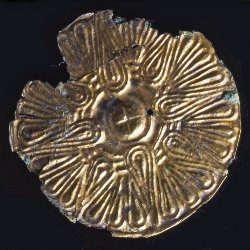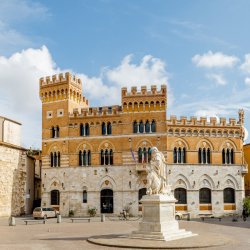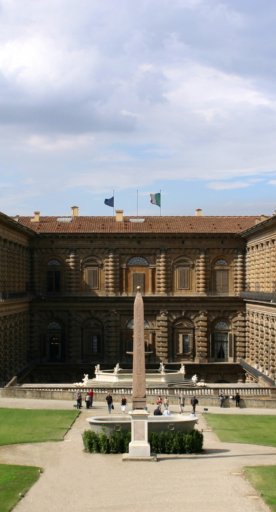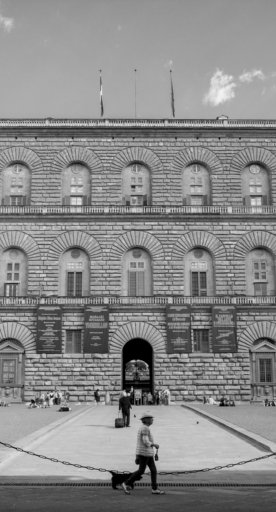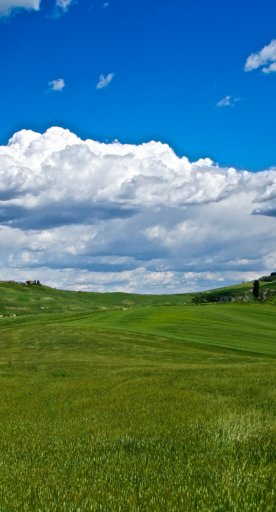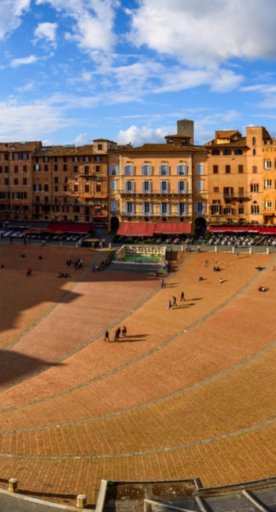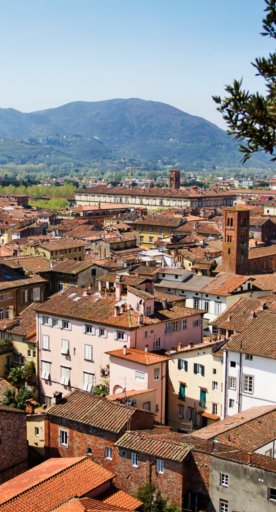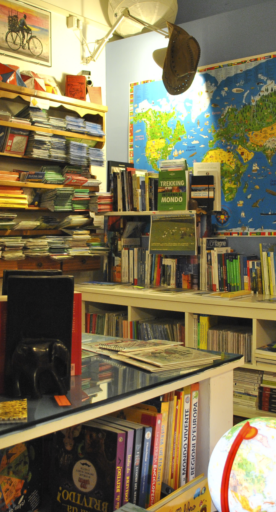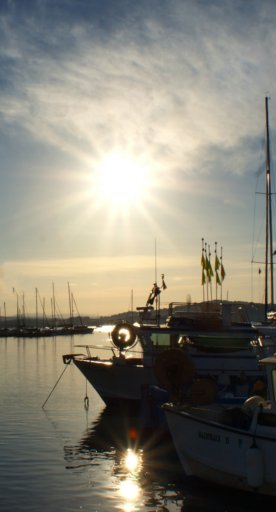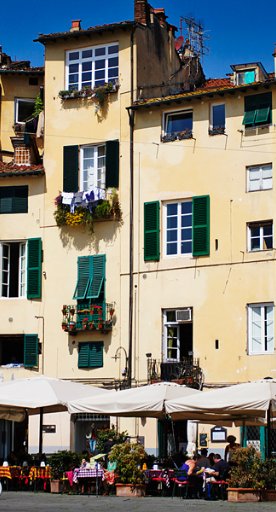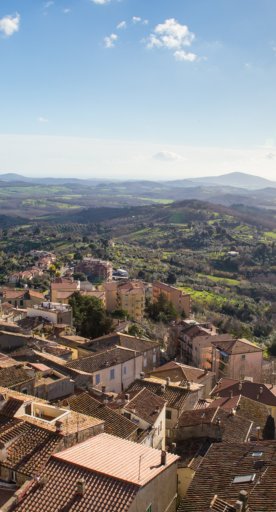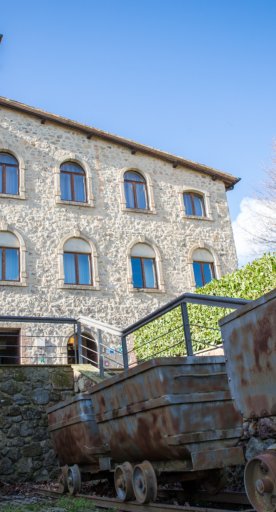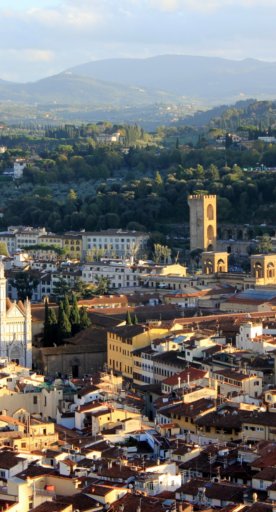Six treasures of the Palatine Gallery
Some highlights of the Palatine gallery
The Palatine Gallery at the Palazzo Pitti can be an overwhelming experience. The dazzling array of works are arranged in a manner to which a modern museum goer may have difficulty adapting. Paintings are stacked high, not according to artist or chronology, but to suit the aesthetic nuances of the day. Here are some highlights of the Palatine Gallery, to provide visual focus points as you make your way through. It is quite easy to feel lost in the sea of golden decorations and fabulous images. This list is by no means exhaustive, merely a snapshot guide. When you visit the Palatine, if any particular artist or work tickles your fancy, jot it down and look it up later!
-
1.Brief History of Palazzo Pitti
-
2.The Portraits of Agnolo and Maddalena Doni by Raphael
-
3.Sleeping Cupid by Caravaggio
-
4.The Three Ages by Giorgione
-
5.Portrait of Prince Waldemar Christian of Denmark by Justus Sustermans
-
6.La Donna Velata (Woman with Veil) by Raphael
-
7.The Bartolini Tondo by Fra' Filippo Lippi
Brief History of Palazzo Pitti

Firstly, a brief history of the Palazzo Pitti. The building is best known as the home of the Medici Dukes, starting from its acquisition by Cosimo I de' Medici's wife Eleonora di Toledo in 1549. Before this, the residence belonged another banking family, the Pitti, who were forced to sell the property after going bankrupt. Under the reign of the Medici, the Palazzo went on to become the pre-eminent palatial residence in Italy. Due to the Medici family's ties with French royalty, it is widely agreed that the extravagance of the Pitti was the stylistic precursor to the Palace of Versailles. Any history-lover should be delighted to visit the courtyard of the Palazzo, which was filled with water for a mock sea battle, or naumachia, during the 1589 wedding of Ferdinando de' Medici and Christina of Lorraine. The Medici line came to an end in 1743 with the death of Anna Maria Luisa de' Medici. After this, the residence passed to the heirs of the Austrian House of Lorraine and for a short time housed Napoleon during his occupation of Italy. It was only after the unification of Italy that the building was eventually presented to the nation in 1919. The Palatine Gallery was itself opened to the public in the late 18th Century, and became a fashionable destination for traveling aristocrats and artists. Even if you know the history of the palace, or some of the works contained within, it is hard to ignore the extravagant display of wealth. This can be distracting if you want to see your Renaissance and Baroque heroes such as Raphael, Giorgione, Titian and Caravaggio.
To assist visitors to the Palatine Gallery, here is a brief guide of some stand-out works. As you traverse the gilt halls and high frescoed ceilings, use these works to bring your focus to the true treasures of the palace.
The Portraits of Agnolo and Maddalena Doni by Raphael

These exquisite portraits by Raphael depict merchant Agnolo Doni and his wife Maddalena. These paintings were executed in oils between 1506-7. Of particular note in these works is the influence of Leonardo da Vinci, whom Raphael had studied during his time in Florence. This can be seen not only in the pose of the figures, but the treatment of the landscape backgrounds, showing a more infinite, ethereal nature. The fact that the matching landscape unites the figures is a sublime touch you can only appreciate when viewing these works side by side. Previous to this, Raphael's style of portraiture more closely mimicked the crisp focus and sharp lines of his master Perugino. (editor's note: But unlike Leonardo, there is a clarity of colour and a sense of ease in these paintings - despite the characters' uptight manner!)
Sleeping Cupid by Caravaggio
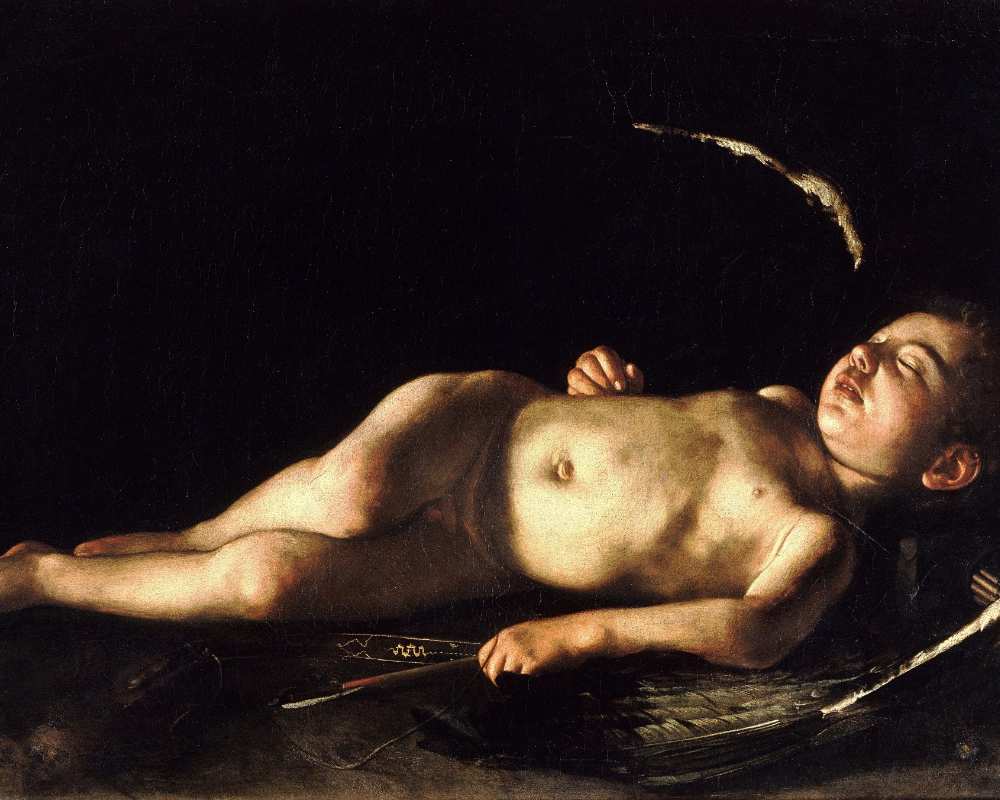
This work is in the Caravaggio exhibition that is currently running at The Palatine Gallery until October. It is however, a part of the original Palatine collection and will eventually resume its standard place amidst the aesthetic chaos of the gallery proper. Like a lot of Caravaggio's later work, there is a sombre gravity to the piece. One can imagine depicting a sleeping cupid in a much more colourful, serene presentation. You won't get this from Caravaggio though, whose use of light and shadow (chiaroscuro) descended into an ever-deepening gloom as the circumstances of his career and personal life worsened. This painting was completed in 1608 during Caravaggio's time in Malta when he had fled Rome due to a murder charge.
The Three Ages by Giorgione
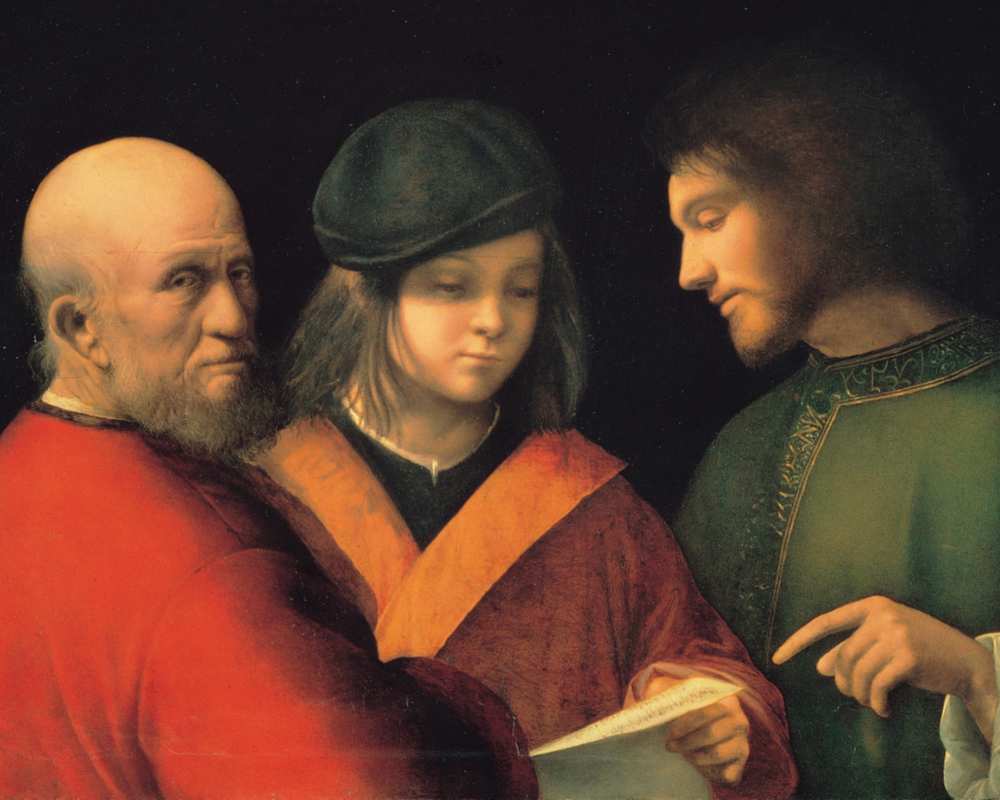
Giorgione was a painter from the Venetian School, active at the same time as Leonardo. Many of his paintings are not conclusively known to be his - this one included. There is also bickering over the meaning of Giorgione's works. What can be said is that the symbols he used are often deliberately ambiguous, opening themselves up to different interpretations. The worldly reading is about the passage of time. The young man must learn about the world - guided by his mentors. The older man's gaze is directed away from this, staring at the viewer, contemplating the passage of time with them. The religious reading is more moral than philosophical. A viable candidate is the story of Jesus, Peter and the Rich Young Man. For more detail, read this analysis by Giorgione researcher Dr. Frank DeStefano. From viewing this painting up close, you will see the writing on the sheet held by the youth cannot be identified as numbers, sheet music, or scripture. This suitably allows the sacred and profane readings to co-exist.
Portrait of Prince Waldemar Christian of Denmark by Justus Sustermans

Portraiture is anot only special part of art history, but also a valuable element of the historical record and this painting has an impressive, photographic quality. As you travel around the Palatine Gallery, you will notice a significant number of paintings by Sustermans, including some of the Medici themselves. He was obviously highly valued by them in his day. It is delightful to come across a portrait artist that is not given the same attention as some of the other superstars on display.
La Donna Velata (Woman with Veil) by Raphael
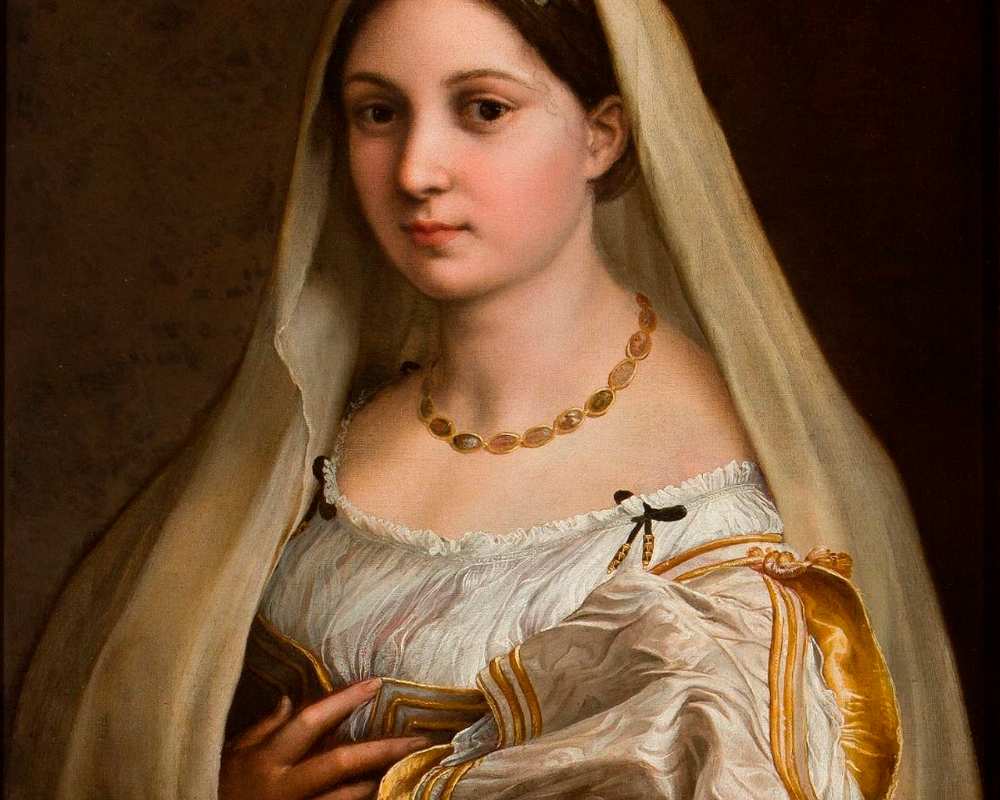
The Donna Velata is undoubtedly a highlight of the Palatine Gallery. This portrait is believed to depict Raphael's lover, a woman named Margerita Luti, the daughter of a baker from Siena. It is this association which earned her the nickname, La Fornarina (little baker girl), a name eventually ascribed to a later portrait of the same sitter. This painting, along with Giorgione's Three Ages is located in the Sala di Giove (Hall of Jupiter), which was the original throne room during the Medici period. It is somewhat amusing to think that amidst all the dizzying opulence; a portrait of a simple baker's daughter adorned the palace. It makes you truly appreciate the mastery of Raphael.
The Bartolini Tondo by Fra' Filippo Lippi
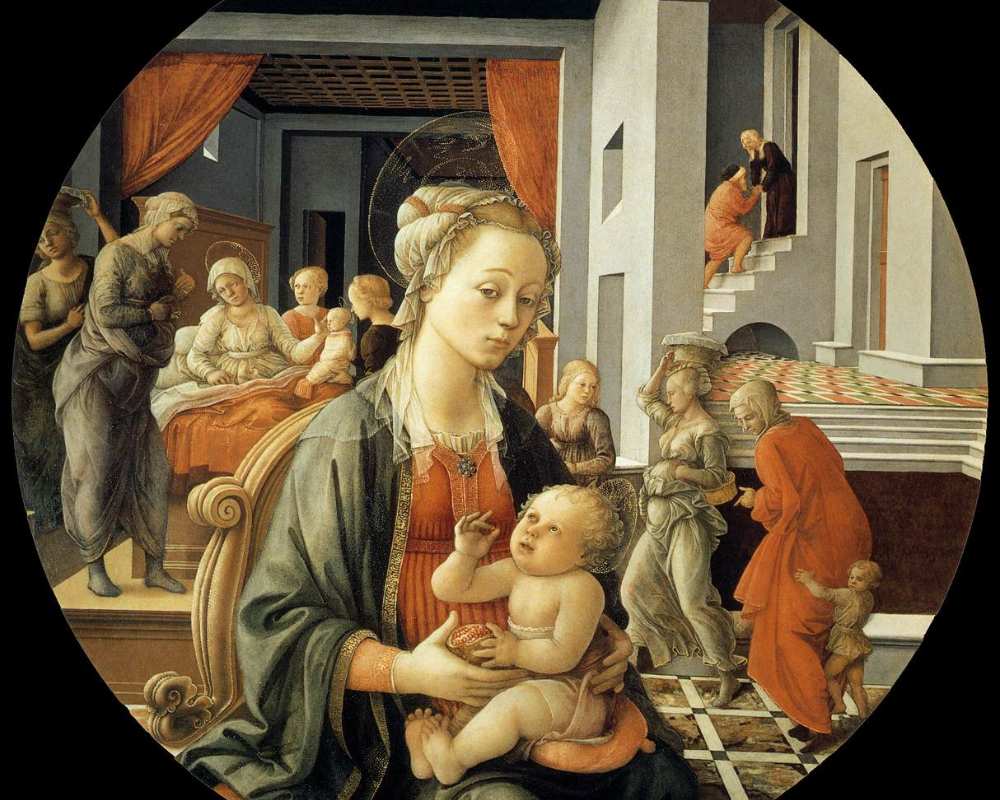
This tondo was painted to commemorate the first-born child of silk merchant Roberto Bartolini. It is the first known use of a rounded panel (tondo), in this instance emulating the shape of a birth tray. The section of wall depicted is especially notable as it shows off Lippi's mastery of linear perspective. Lippi's work is quite large and worth studying closely, particularly the interesting interplay between the scenes depicted in the background and the Madonna and Child in the foreground. The Palatine Gallery is only a small part of the Palazzo Pitti experience. The entire complex houses several different museums and exhibits, including the expansive Boboli Gardens. It is worth allowing a good half day in order to make a proper sampling of the Palazzo's many attractions.
This is a guest post from art history blogger H. Niyazi who, after years of studying art at a distance (he lives in Australia), finally came to Florence to see in person the treasures about which he has read and written. Three Pipe Problem.


